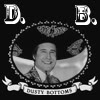I just bought my first Mag in 18 years, had a 68 classic in high school. I bought an RT online and the guy selling it said it airs up and shoots fine but, "the RT function is weak."
Where should I start in diagnosing something like this? Thanks for any and all help, I just want this thing running perfect so I can get it in the field.



 Reply With Quote
Reply With Quote








